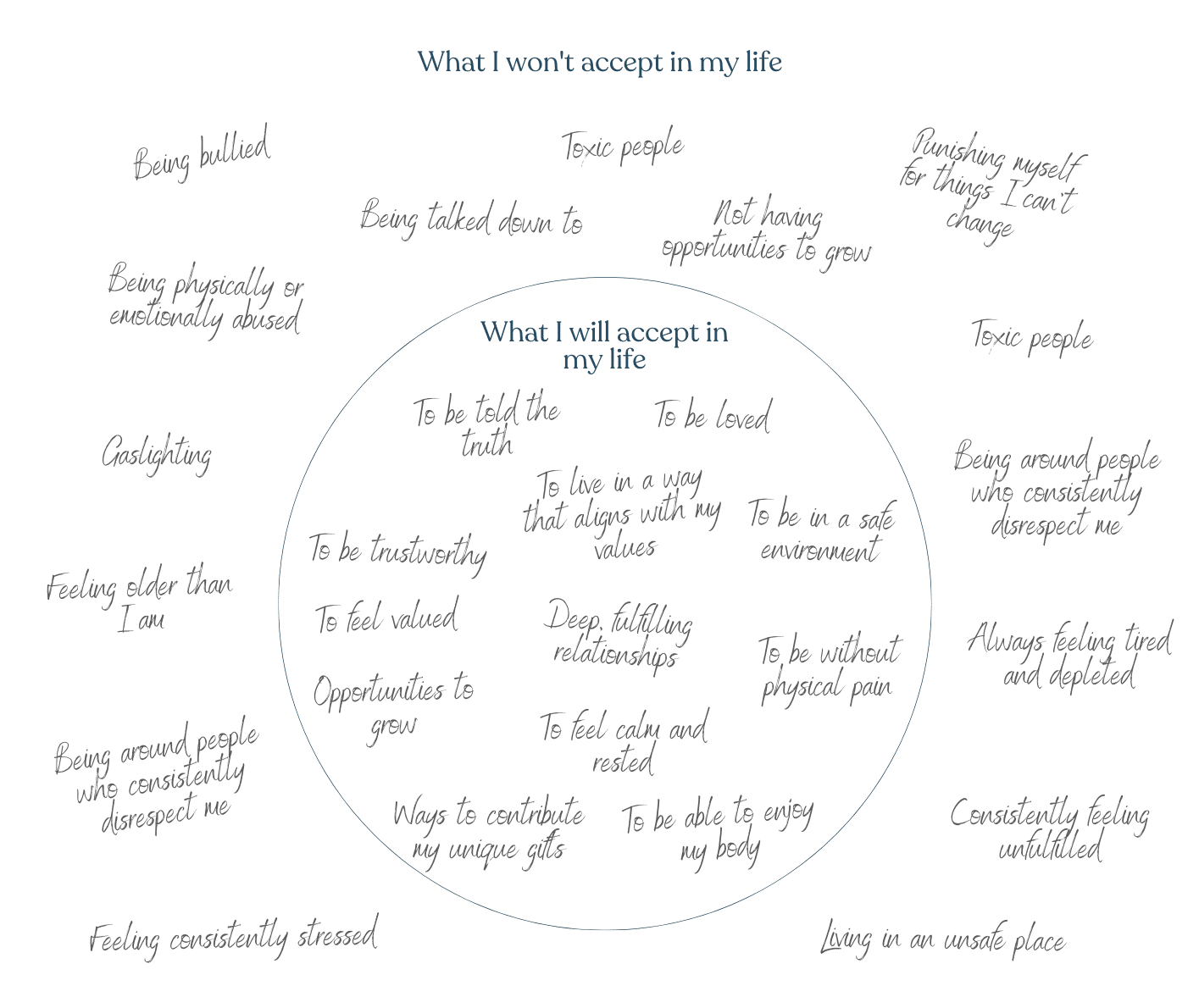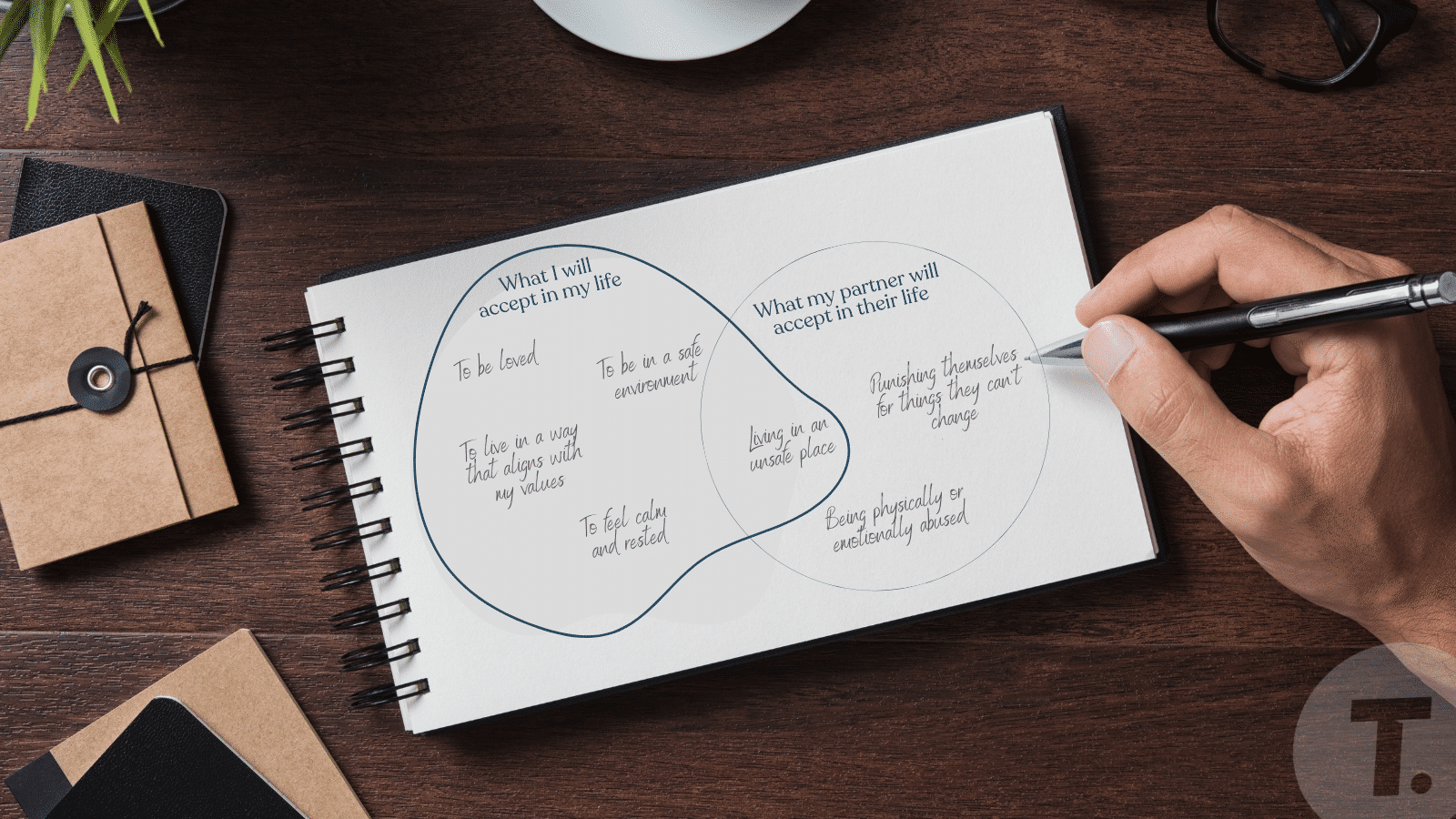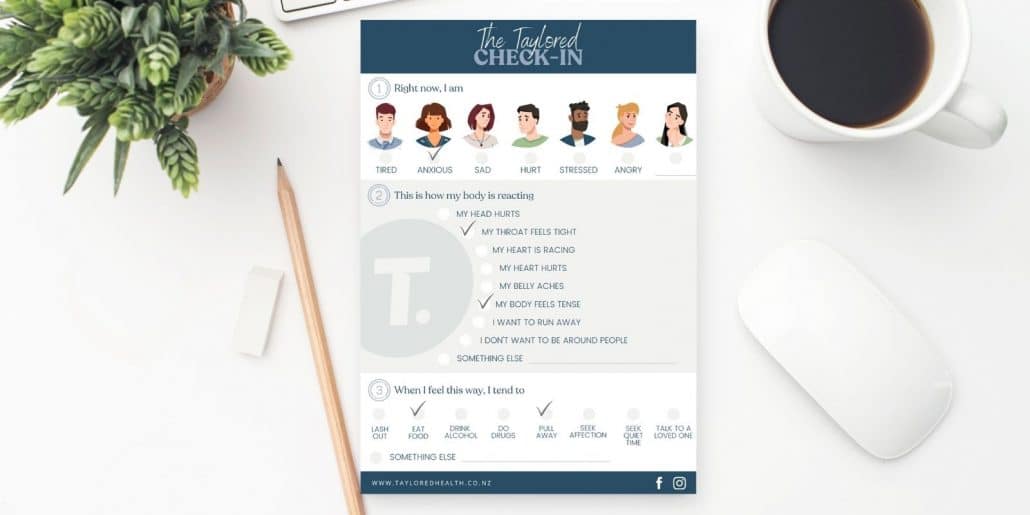“When you stand for nothing, you fall for everything”
Let’s talk about boundaries
As we grow up and navigate into early adulthood, we form a collection of values, beliefs and behaviours we feel are acceptable in our lives. Much like a boundary can show the edges of physical property, we can also use this term to describe the edges of an emotional and behavioural world (the basis of mental health models). Throughout our lives, we might stretch our boundaries to try and meet others where they are but depending on how flexible or fixed your boundary is, you may or may not come back to those original edges. Here is an example of a really healthy boundary map:

Theory vs Reality
It’s actually quite common for us to think a value is important to us (and protected within our inner boundary)…but find there is a contradiction between what we think we believe and actual habits and behaviours.
This can mean you’re either living with an old (false) belief or trauma from childhood that is so ingrained that you don’t even know it’s there AND/OR at some point in your life you stretched your inner boundary edge to meet someone else (e.g. to keep the peace in a relationship) resulting in what we call “boundary creep”.
What is Boundary Creep?
Here is an example of how we will stretch our boundaries to meet someone else’s.

We’ve chosen phrases here that (feel free to zoom into this image on your phone), as the boundary continues to creep will start to erode and sabotage other important values. These things happen over time and can happen within any relationship – personal or professional. It can be so insidious, that over many years you look in the mirror and don’t know how you got there or who you are. That’s because you a) didn’t have a clear idea of your boundary i.e values AND b) didn’t know how to protect it. As a result, you can inadvertently start sabotaging yourself.
Your Turn.
Let’s defuse this a little bit by starting with one of your Taylored Check-Ins.
Was there a moment this week when you felt a bit off-balance, upset, frustrated, conflicted or confused? If so, have a think about the situation.

Was there something about that situation that conflicted with your values? If so, write the value you have in your inner boundary using this template…and the thing or situation that created tension in the outer area.
The beauty of this exercise is that you can do this when assessing those “bad” habits you seem to have. For example, if you find you comfort eat when you’re upset have a think about why you’re actually upset. What did you accept in your life that conflicted with your values, and led to you being upset? That is the thing you need to address. Remember, false beliefs about yourself (or boundary creep) are usually the core issue behind any self-sabotaging behaviour or internal conflict. But this is an important journey to begin.
This is a topic some of our clients spend years untangling. But it’s a powerful technique to get you thinking…and oftentimes results in more empowered decision-making. At the very least, it gives you new language to observe, unpack, and communicate your emotions.
Here is an e-copy of this breakout exercise to print and use.
We are here to talk if you need a little help. We work with so many people determined to untangle their belief:behaviour conflicts and it creates a lot of ah-ha moments.
Our 1:1 coaching is what supercharges this exercise. Just get in touch if you’re interested in exploring this with one of our lifestyle coaches.
